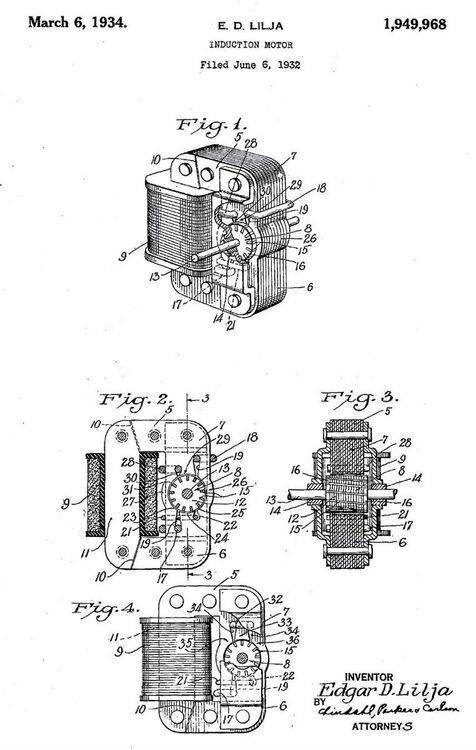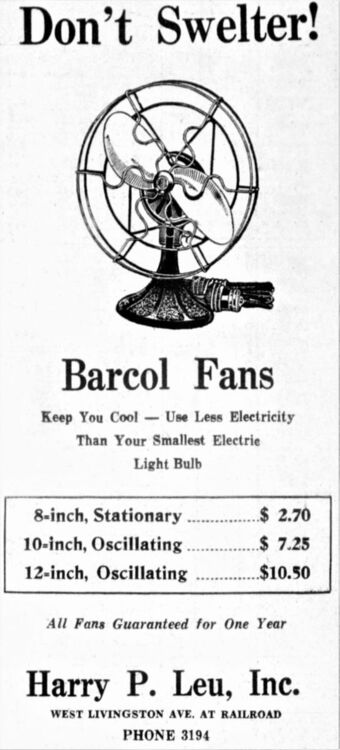Posted by MK Research on Sep 13th 2023
Bakelite Fans Of Barcol Barber Colman 1930-1937

Howard Colman grew up in Wisconsin, subsequently moved to Rockford, Illinois and his company operated under the name of Barber Colman. For decades, Rockfordians assumed Mr. Barber and Mr. Colman were partners. That was not the case at all. Mr. Barber was an entrepreneur who took an interest in Colman's endeavors (actually Barber was the father of a boyhood friend of Howard Colman) and assisted financially in the start of his many inventions. To the integrity and credit of Colman, he always gave credit to Mr. Barber and the return on Mr. Barber's investment was not only monumental financially but also historically. Howard Colman is perhaps one of the world's top inventors with over 140 patents to his name. He started inventing at age 5" - "The Hub Pages", Ken Kline. Howard Colman died in a car accident in 1942. Harry Severson, one of the three original directors, took over leadership of the company. In 1953, the "Park Plant" was built, a one-story, 125,000-square-foot (11,600 m2) building in nearby Loves Park. In 1954, the company purchased the Hendey Machine Company. By 1965, three other additions were complete on the Loves Park facility. In 1968, a 200,000-square-foot (19,000 m2) facility was built just north of the original plant. By 1975, Barber–Colman employed 4000 workers among its 150 locations. The company was family-owned until the death of Walter Colman (Howard's son) in 1983. Following Colman's death, the company was sold off to various companies. Reed–Chatwood purchased the textile operations and continued to manufacture from the original factory until 2001. The machine tool division was sold to fellow Rockford company Bourn & Koch, who provides parts, service, and support for their machines to this day. Barber–Colman henceforth focused on cutting tools and process controls. The remaining divisions were eventually sold off. The Barber–Colman trademark is held by Eurotherm Controls, Inc. The historic complex has been vacated since Reed–Chatwood relocated in 2001. The City of Rockford currently owns the property, purchasing it for $750,000 in 2002. On August 8, 2006, it was recognized by the National Park Service with a listing on the National Register of Historic Places.
Intitial production of the Bar(ber)-Col(eman) fans begins in 1930, a six-inch, four-winged fan with a Bakelite base and motor housing, cadmium plated base wight, cage and neck tilt adjustment screw and nut, known as the "Bar-Col Six". The motor is of the induction type. As of 1931, industrial designer Clarence E. Smith and engineer/inventor Duncan J. Stewart team up for Bar-Col's plans of fit and function for their electric fan production line. Another fan, of almost identical design as the previous four-inch fan, comes in a larger size, having an eight-inch aluminum, two-winged blade, known as the Bar-Col Eight". The fans are very big sellers, so much so that Barber-Colman successfully sues rival competitor Master Electric Company, of Dayton, Ohio, for design and mechanical patent infringement, essentially making very close knock-offs of the Bar-Col brand. By 1932 Bar-Col inventor Edgar D. Lilja designed and received his patent for the Bar-Col fan motor, a very popular motor design, touted as being "silent", "never needs oil" and "doesn't interfere with radio reception". Also in 1932, a Bar-Col anomaly single year and limited production model anomaly: An eight inch cast iron and pressed steel model having no Bakelite, or even a cage badge. With the exception of the cage and neck tilt hardware being cadmium plated, the rest of the fan, including the blade is finished in black enamel. Currently, there is no immediate explanation for this production aberration. Thereafter, production of the Bar-Col line-up becomes standardized, and continues on until the end of production having Bakelite blades and motor housings. Later in 1932 to 1936, beside the standard Bar-Col Six and Bar-Col Eight single-speed stationary models, there are Six and Eight two-speed models introduced, as well as oscillating Six and Eight inch versions. Of note, 1936 is the first-year introduction of the Bar-Col Twelve oscillating fan offered by the firm. However, this is short-lived. 1937 seems to be the last year of the manufacture and marketing of Bar-Col bakelite desk fan designs, remaining stocks being liquidated. Other fans with the Bar-Col badge were other contracted makes, like Diehl, rebadged for marketing as Bar-Col had ceased fan production altogether, concentrating on industrial and electrical components.



